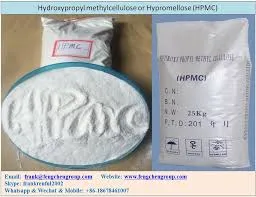
11월 . 25, 2024 03:41 Back to list
hydroxyethyl cellulose for paint
Hydroxyethyl Cellulose for Paint Enhancing Performance and Application
Hydroxyethyl cellulose (HEC) is a non-ionic, water-soluble polymer derived from cellulose, a natural polymer that forms the structural component of the cell walls in plants. Since its discovery, HEC has become an essential additive in various industries, particularly in paints and coatings. Its unique properties significantly enhance the performance, application, and overall quality of paint products.
One of the most critical attributes of hydroxyethyl cellulose is its ability to act as a thickening agent. In the formulation of paints, the viscosity of the paint is crucial; it influences how well the paint can be applied, its shear-thinning properties, and the final appearance of the surface after drying. HEC provides desirable flow characteristics, ensuring that the paint can be easily applied with brushes or rollers and offers excellent leveling properties. This results in a smooth finish with minimal streaks or unevenness.
Hydroxyethyl Cellulose for Paint Enhancing Performance and Application
Another significant advantage of HEC in paint formulations is its ability to control water retention. Water retention is crucial for ensuring that paints dry properly without compromising the integrity of the film. HEC aids in extending the open time of the paint, allowing for a longer working period during application. This is especially beneficial in conditions where drying might occur too quickly due to heat or airflow. By enabling better water retention, HEC helps to facilitate proper film formation, leading to improved adhesion and durability of the paint once it dries.
hydroxyethyl cellulose for paint

Moreover, hydroxyethyl cellulose contributes to the anti-settling properties of paints. Sedimentation of pigments can lead to uneven color distribution and poor application performance, resulting in a subpar finish. HEC helps to stabilize pigment suspensions, ensuring that paints remain well-mixed and deliver consistent color and texture from the first stroke. This characteristic is essential for maintaining high-quality standards in commercial paint products.
In recent years, sustainability has become a focal point in the paint and coatings industry. Hydroxyethyl cellulose, being derived from natural cellulose, aligns with this shift toward eco-friendly products. Its biodegradable nature and relatively low environmental impact make it an attractive choice for manufacturers striving to reduce their ecological footprint. Additionally, using HEC can help formulate lower-VOC (volatile organic compounds) paints, which are safer for both the environment and human health. Low-VOC paints are particularly important in residential and commercial applications, where indoor air quality is a major concern.
From an application perspective, HEC can be utilized in various types of paints, including water-based and solvent-based formulations. Its versatility allows for its inclusion in decorative paints, industrial coatings, primers, and sealers. The adaptability of hydroxyethyl cellulose makes it a valuable ingredient for manufacturers looking to diversify their paint product lines while maintaining performance standards.
In conclusion, hydroxyethyl cellulose serves as a multifunctional additive in paint formulations, contributing to improved viscosity, stability, water retention, anti-settling properties, and sustainability. As the demand for high-performance and eco-friendly paints continues to grow, the role of HEC will undoubtedly expand, solidifying its position as a key player in the coatings industry. By enhancing both the application and overall quality of paints, hydroxyethyl cellulose not only benefits manufacturers but also meets the evolving preferences of consumers for durable and environmentally friendly products.
-
Versatile Hpmc Uses in Different Industries
NewsJun.19,2025
-
Redispersible Powder's Role in Enhancing Durability of Construction Products
NewsJun.19,2025
-
Hydroxyethyl Cellulose Applications Driving Green Industrial Processes
NewsJun.19,2025
-
Exploring Different Redispersible Polymer Powder
NewsJun.19,2025
-
Choosing the Right Mortar Bonding Agent
NewsJun.19,2025
-
Applications and Significance of China Hpmc in Modern Industries
NewsJun.19,2025







